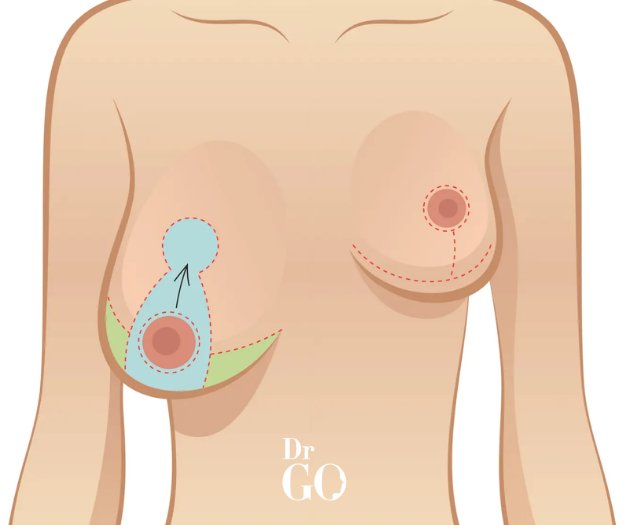Mild breast asymmetry is quite common among women—in fact, almost every woman has a slight difference between her breasts. However, when the difference in shape, size or nipple position becomes noticeable, it can cause physical and emotional discomfort. This condition is referred to as breast asymmetry and can be caused by genetic factors, pregnancy, breastfeeding, weight changes, ageing, hormonal imbalances, male breast enlargement (gynaecomastia), or menopause.

Situations That Go Beyond Aesthetic Issues
Noticeable breast asymmetry can affect a person’s self-confidence, clothing choices and overall quality of life. Striking asymmetry, particularly in young women, can lead to body image issues and emotional distress. Choosing underwear, swimwear or tight-fitting clothing becomes a daily struggle, and this situation can sometimes have a negative impact on social relationships and personal life.
Surgical and Non-Surgical Treatment Methods
The good news is that breast asymmetry can be corrected using various methods. The method to be used is determined based on the individual’s anatomy and expectations, and may involve surgical or non-surgical solutions. The aim is to restore balance and harmony to the breast contour.
If sagging of the breast is also an issue, breast lift surgery can be used to reshape the breast tissue. In cases where one breast is smaller than the other, breast augmentation surgery may be performed. This procedure can be done using silicone implants, fat injections, or fillers. Conversely, if one breast is significantly larger than the other, breast reduction surgery can be performed to achieve symmetry.
If there is a difference in the position of the nipple, minor surgical procedures can be used to reposition it. In cases of gynecomastia in men, liposuction and breast reduction surgery are usually performed together to achieve a symmetrical appearance.
Personalised Planning
Breast asymmetry correction surgery is performed under local or general anaesthesia, depending on the scope of the procedure. The operation usually lasts between 30 minutes and 2 hours. Most patients experience minimal discomfort during the recovery process. In some cases, a short hospital stay may be required, while many patients return to their daily lives within a few days. However, it is recommended to avoid strenuous physical activities for several weeks to allow for full recovery.
Interest in Non-Surgical Solutions is Growing
Thanks to advances in aesthetic medicine, non-surgical solutions are also available for people with mild breast asymmetry. Hyaluronic acid fillers or fat injections can be used to add volume to the smaller breast, creating a natural and balanced appearance. These methods are ideal for patients who do not want permanent surgical intervention or are looking for a temporary solution.
First Step: Expert Opinion on Breast Asymmetry
If you are uncomfortable with differences in the size or shape of your breasts, the first step should be to consult with a specialist aesthetic surgeon. After a detailed examination, your doctor will determine the most appropriate method for you—whether surgical or non-surgical—and help you achieve your aesthetic goals safely and effectively.
When performed with the right technique and expertise, breast asymmetry treatment offers significant physical and emotional benefits to the individual. More balanced body contours, increased self-confidence, and a noticeable improvement in quality of life are the most valuable gains of this process. As always, choosing an experienced surgeon and a fully equipped clinic is the foundation of a successful aesthetic journey.





